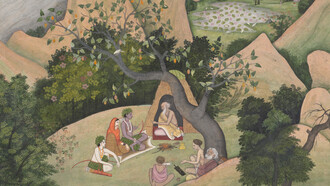A three-letter word, yet probably the most powerful word in all languages is “Sex”. A word so potent, the mention of it creates images in peoples’ minds; young and old alike. This one syllable word could bring a smile to peoples’ faces and it could bring people down to their knees for pleasure or for destruction. It has been and continues to be a source of wealth creation. Thus the expression “sex sells.”
Sex sells
This is a well-known expression in the entertainment world. This is because the industry knows sex’s impact in drawing listeners and viewers alike to their content. Thus the music industry, the film industry (not excluding the pornographic industry) and the writing industry have garnered this. The contents churned out by a lot of, if not most of these entertainment industries have direct connotations to sex or occasionally subtle allusions. to sex.
Moral limit
Sex is so potent that it drives people of all statures; wealthy and poor alike to destruction; whether through sexually transmitted diseases or criminal acts or mental illnesses such as the one acquired through pornography;pornographic addiction.
Pornographic materials of all sorts have built sex industries that make millions, if not billions. Ergo, the ultimate aim of these industries is to make money. Therefore there is no moral limit to the materials they provide and the age limit/age of consent of the sex entertainers involved.
Age of consent: history and current
According to World Population Review (2024), “The age of consent" is the minimum age at which a person is considered legally competent to consent to sexual acts. A person younger than the age of consent (i.e.:underaged) cannot legally confirm that a sexual act in which they participated was consensual. To state it another way, in the eyes of the law, they are not yet old enough to consent to sex.
As a result, if a person over the age of consent engages in sexual activity with a partner who is underaged, this activity may be considered statutory rape. In fact, in some jurisdictions, a sexual act can be considered statutory rape even if all participants were underaged. This essay aims to explore the age of consent in some eras, in some religions, in some communities in the past and current constitutional provisions of age of consent in countries around the world.
History: Europe and some British colonies
The age of consent was based on tribal and familial beliefs “… and only became a legal one in the Greco Roman period. The Roman tradition served as the base for Christian Europe …” which “… set it at 12 or 14 but continued to set the absolute minimum at seven” (Bullough, V . L. (2005). In the Roman and Canon laws, the age of consent was aligned with the contraction of marriage and puberty and reproduction.
Although the marital age was 12, the contraction of marriage made it legal for the consumption of marriage even though the young woman maybe below the age of 12; it was not necessary in regards to the age of consent, it was not with her consent. (Stephen Robertson, 2021).
The law on the age of consent appear in England’s secular law in 1275 as part of the law on rape (misdemeanor) ; which made it illegal to “ravish a maiden within age” with or without her consent. “Within age” was under 12. In 1576 it was a felony to " unlawfully and carnally know and abuse any woman child under the age of 10 years ".
In the 16th century some Italian and German states consented to 12 years as the age of consent. On the other hand, the French Napoleonic code of 1791 made the age of consent, 11. However later in 1863, it was increased to 13 for both sexes.
In fashion to the Napoleonic code, the Portuguese, Spanish, Danish and Swedish cantons adopted 10-11 as the age of consent but increased to 13 later. In 1875, England increased the age of consent to 13, however its colonies in the United States had different age of consents which “ranged from 10-11.”(Robertson Stephen, 2021).
Also in the British colony of Indian, there was the introduction of the 1860 Penal Code which made child marriage, marital rape and regulated the age of consent to 10, but the contraction of marriage to 12 (Stephen Robertson, 2021).
History: age of consent in Africa
The age of consent was based on when one had attained puberty and had undergone the puberty rite. Thus among the Krobo ethnic group of Ghana, one was banished forever from one’s home town if such a person does not undergo the puberty rite before sex, especially when such a person becomes pregnant. Mwangi (2005) collaborates this with “This is a gendered process. At menarche, girls are recognized as having attained the capacity to take on the role of child-bearing, a role reserved for adults.
On the other hand, for boys, semenarche is not as significant because further to having attained reproductive maturity, the boy is expected to demonstrate that he can take on the role of raising a family. Passage rites as observed in some cultures, which include the formal process of indoctrination of sexual and cultural values, complete the transition to adulthood” (Kangaude & Skelton, 2018). Nowadays, to avoid the issue of banishing their citizens/tribesmen getting pregnant without the puberty rite (Dipo), the Krobo initiate their young women through the puberty rite (Dipo) earlier before their menarche.
Conclusion
The issue of the age of consent is a convoluted one, however it is as clear as day that minors have to be protected from sexual predators, thus the age of consent should be kept at 18. The issue of maturity of mind and body comes into play, with the issue of fistula and sexually transmitted diseases and sexual exploitation part of it.
Thus the Guardian’s (July 2014) report from the Home Office that the age of consent be reduced to the increasing lowering age of puberty and the Huffington Post’s argument that the age of consent at 16 needs to be reviewed because it is a 100 year old law (Bates, 2015) is controversial and dangerous to the safety of minors.
Reference
Age of Consent by Country 2025. (2025). World Population
Robertson, Stephen. Age of Consent Laws.
Bates, Victoria. (2015) The legacy of 1885: girls and the age of sexual consent.
Bullough, V. L. (2005). Age of Consent: A Historical Overview. Journal of Psychology &
Human Sexuality.
Annotated by Stephen Robertson.
Kangaude, Godfrey Dalitso., Skelton, Ann. (2018).(De)Criminalizing. Adolescent Sex: A Rights-Based Assessment of Age of Consent Laws in Eastern and Southern Africa.















